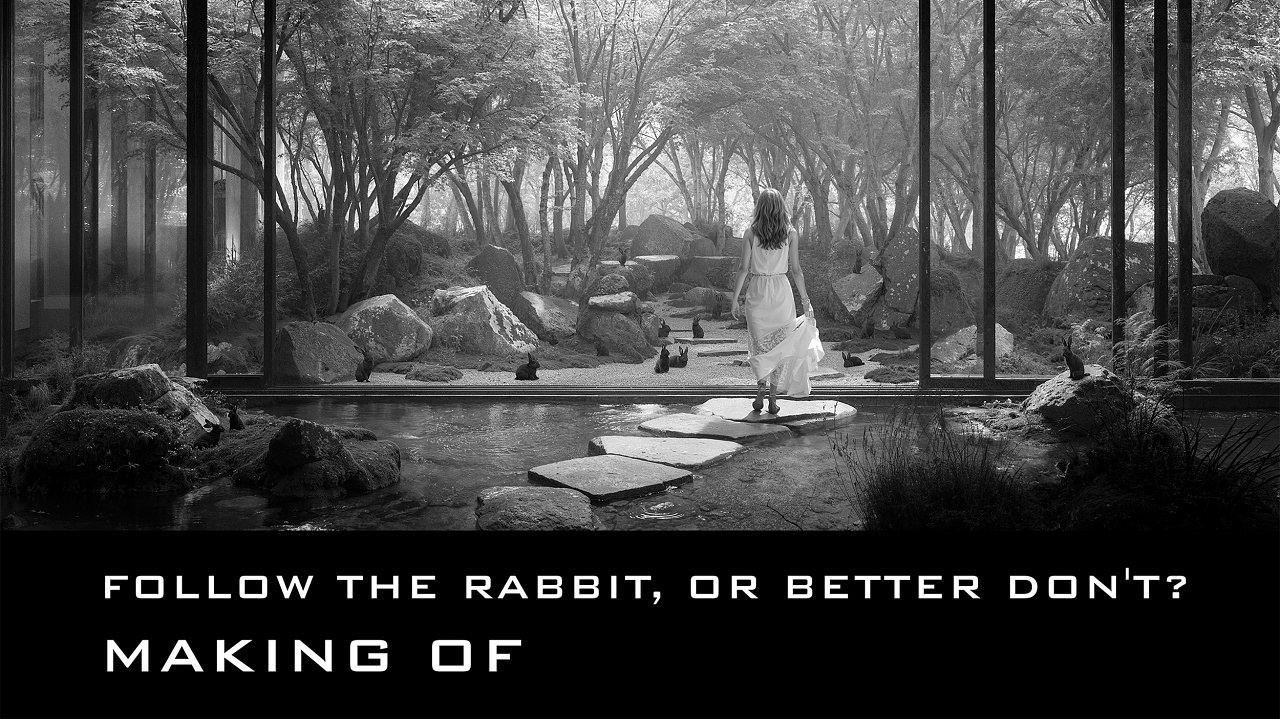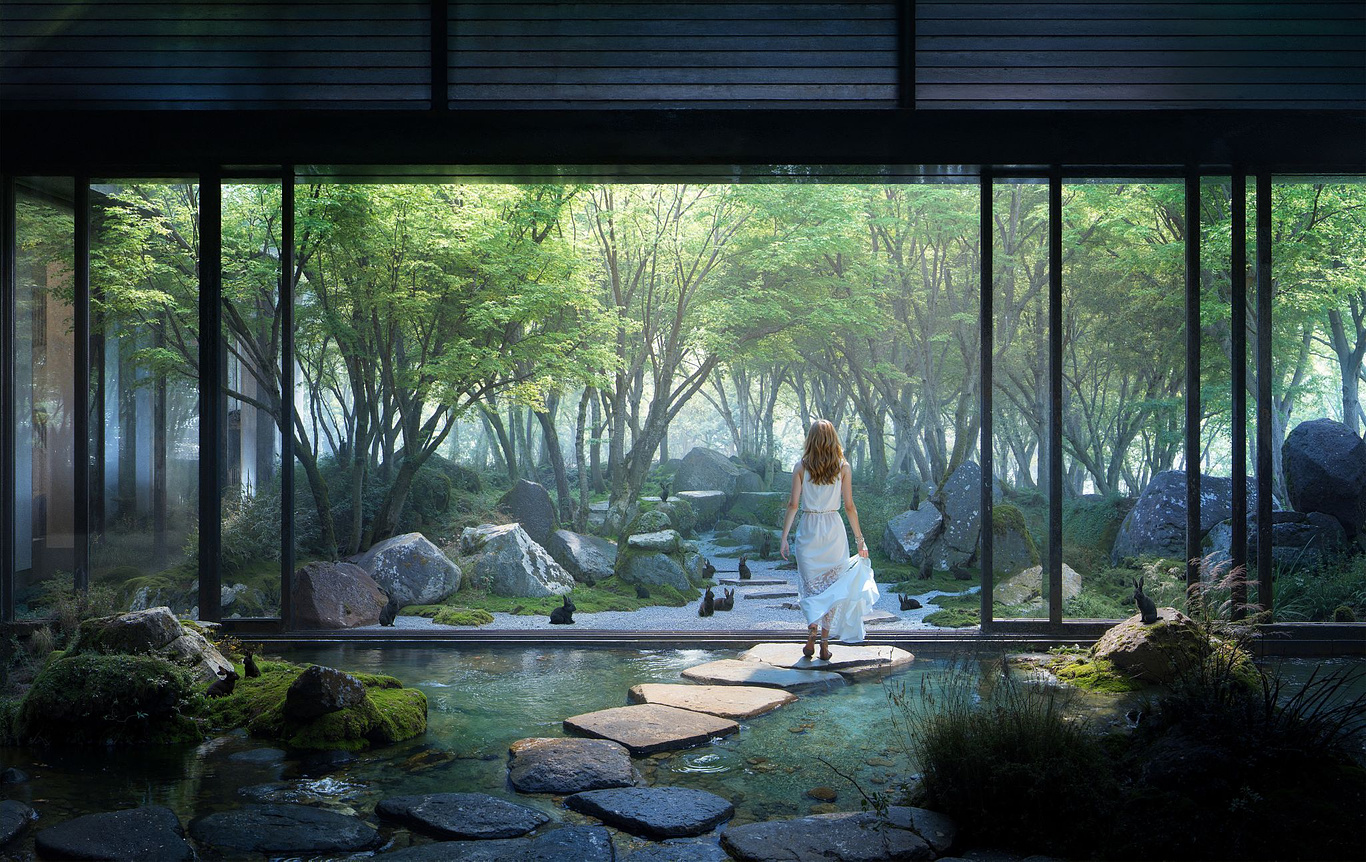
Making Of
The Making of "Follow the Rabbit, or Better Don’t?" by Victoria Chuchupalova: A Blend of Traditional and AI-Enhanced Workflow
In her latest work, Victoria Chuchupalova presents an intriguing blend of architecture, nature, and surrealism, encapsulated in a serene Japanese-inspired garden with a twist. The project, built using 3ds Max, Corona Renderer, Forest Pack, Photoshop, and AI-driven tools like Stable Diffusion and Magnific AI, explores the duality of beauty and illusion. The garden itself feels surreal and slightly off, designed to leave the viewer questioning what is real and what is imagined.
Concept Development: From Sketch to Scene
The journey began with a simple sketch and a collection of references, inspired by Zen gardens and surreal landscapes. The concept revolves around creating an environment that feels both serene and deceptive, where a water feature and a narrow stone path add to the surreal atmosphere. The garden is meant to caution viewers not to follow its beauty blindly, hence the dual meaning embedded in the design.
3D Scene Creation: Crafting the Space
To bring the idea to life, Chuchupalova combined pre-made models with custom elements, constructing a wide, almost symmetrical landscape scene. She focused on architectural details in the foreground and populated the space with models, some scanned, others sourced from stock libraries or MaxTree packs.
Lighting played a crucial role in achieving the desired eerie atmosphere. Using Corona Sun+Sky, she avoided strong shadows, ensuring the light was subtle yet effective. The addition of fog, created using CoronaVolumeMtl, deepened the illusion of an infinite garden space.
Postproduction: Enhancing the Scene
Postproduction was key in refining the final image, with a heavy reliance on Photoshop and Stable Diffusion. Using render passes allowed for fine control over elements like reflections, translucency in the greenery, and indirect lighting intensity. The final scene took shape with additional fog, fine-tuned details, and a seamless integration of a woman and rabbits into the composition—both generated with Stable Diffusion.
Chuchupalova then created a "red" version of the scene, where similar processes were applied. After basic corrections in Photoshop, Stable Diffusion was used again to generate people and enhance the centerpiece—a rabbit—based on a raw sketch. For further refinement, Magnific AI was incorporated into the workflow, a tool she uses in almost 90% of her projects to save time and enhance details.
A Story with No End
The final project consists of two distinct versions of the garden, each telling a story with no definitive ending, allowing viewers to fill in the gaps with their own imagination. Chuchupalova's approach blends traditional 3D modeling with cutting-edge AI tools, creating a unique workflow that redefines how architectural visualization can be enhanced with AI.
While her standard workflow was altered during the project, due to evolving ideas and details, Chuchupalova plans to share her usual process in her next project. In this case, the fusion of creativity and technology allowed her to break boundaries and bring a simple sketch to life in a way that was both innovative and visually captivating.
You can check the original post on her LinkedIn here.
You must be logged in to post a comment. Login here.
About this article
In her latest work, Victoria Chuchupalova presents an intriguing blend of architecture, nature, and surrealism, encapsulated in a serene Japanese-inspired garden with a twist.
visibility347
favorite_border2
mode_comment0







